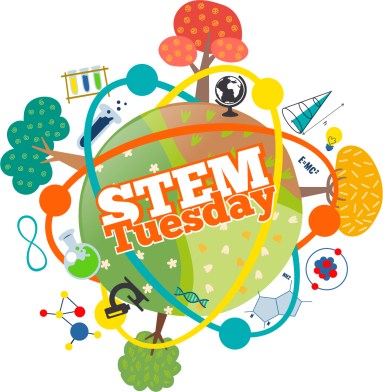
They say “extinction is forever” – but is it? These books address the very real threat of extinction of the living organisms that share our planet. They also show what we can do about it, how some species have recovered, and some even ask whether we should bring back “lost” species.

Animals at the EDGE: Saving the World’s Rarest Creatures by Marilyn Baillie
Dinosaurs are not the only animals who’ve gone extinct; the last marsupial Tasmanian tiger died just 75 years ago. Meet the scientists searching for proof that eleven rare animals (the last of their kind) still exist. Discover what they’ve found and their next steps in either finding or surveying and protecting these amazing animals. The conversational tone, mini biographies, “field note” sidebars, and map make this a wonderful introduction to these animals.

Gone is Gone: Wildlife Under Threat by Isabelle Groc
After explaining extinction and tallying losses, the author examines the numerous ways scientists track and evaluate species numbers and their habitats, as well as the threats each faces. Then highlights the efforts by scientists and citizens which have rescued species (eagles, condors, and right whales) and current efforts to save many others (northern white rhinos, tortoise, and ducks). “Act For Wildlife” sections focus on ways kids, and others, have made a difference.

American Jaguar: Big Cats, Biogeography, and Human Borders by Elizabeth Webb
A jaguar in the U.S.? This book starts with the discovery of a jaguar near the Arizona border and examines the hazards of habitat fragmentation on animals and plants and the work of scientists, citizens, and governments to create corridors (protected areas or over/underpasses) to save numerous species from genetic islands and extinction. Geared for slightly older readers, it uses the history of science and scientists, legends, case studies, conservation connections, and calls to action, as well as great photographs, charts, & graphs to make it very accessible.

Giraffe Extinction: Using Science & Tech To Save the Gentle Giants by Tanya Anderson
Discovering a 40% population drop (in just 30 years), scientists are racing time to study, count, and track nine subspecies of giraffes. The book details the genetics, spot identification software, specific case studies, and spotlights seven conservation efforts. It also offers citizen science suggestions and provides an awesome giraffe guide detailing each of the subspecies physiology, spot patterns, and extinction risk. The photos, charts, and graphs are both gorgeous and heart-breaking.

DeExctintion: The Science of Bringing Lost Species Back to Life by Rebecca Hirsch
Can we and should we bring back a wooly mammoth, passenger pigeon, or Tasmanian tiger?
Or maybe use the technology to prevent current threatened extinctions, such as reviving the “vanished” American chestnut trees, whooping cranes, and the black-footed ferret (once thought extinct, until a small population was discovered in 1981). An interesting look at cloning, DNA mapping and manipulation, and how frozen tissue collections have been used to create diversity in Giant pandas. Hirsch also addresses extinction in two other books: Where Have All the Birds Gone? : Nature in Crisis, in which she notes the warning signs of extinction events; and Where Have All the Bees Gone? featured in an earlier STEM Tuesday post.

Condor Comeback by Sy Montgomery, photographs by Tianne Strombeck
In 1987 the California Condor was declared officially “extinct in the wild.” Fortunately, scientists, volunteers, and everyday people worked together to return condors to the wild. Through it all, readers learn about condor society, behavior, and biology.

Save the People! Halting Human Extinction by Stacy McAnulty, art by Nicole Miles
This is a book about the potential demise of our planet: events that have occurred, are currently underway, and – hopefully – will never happen. Written with humor and sass, the author outlines a few “favorite threats” to the human species: plague, asteroids… But the biggest, most immediate threat is human-caused climate change. She lays out the problems and potential solutions and offers a To Do list at the end.

Rewilding: Giving Nature a Second Chance by Jane Drake and Ann Love
A handbook for those who want to halt extinction in its tracks. This book shows how it is possible to create core areas for wild species, corridors to connect them, and ways to support the keystone species in those habitats. Examples of rewilding include projects in urban environments as well as vast spaces.

Champion, The Comeback Tale of the American Chestnut Tree by Sally M Walker
American chestnut trees were once plentiful in our eastern forests, until 1904 when a fungus wiped out entire forests. But when that fungus showed up in Europe, some infected trees survived. Now scientists want to know if it’s possible to breed a blight-resistant variety, and others are exploring biotechnology options, such as inserting a fungus-fighting gene into the chestnut’s DNA.
For kids who love to choose their own adventures:

Can You Protect the Coral Reefs? : An Interactive Eco Adventure by Michael Burgan
Coral reefs face threats of extinction from increasing ocean temperatures and pollution. In this choose-your-own-adventure, readers learn about coral reefs and then choose a scientific research project to join (there are 3 of them, and you can come back to join another). There’s a lot about ocean research packed into this interactive informational book.
This month’s STEM Tuesday book list was prepared by:

Sue Heavenrich, who writes about science for children and their families on topics ranging from space to backyard ecology. Bees, flies, squirrel behavior—things she observes in her neighborhood and around her home—inspire her writing. Visit her at www.sueheavenrich.com

Maria Marshall, a children’s author, blogger, and poet who is passionate about making nature and reading fun for children. When not writing, critiquing, or reading, she watches birds, travels the world, bakes, and hikes. Visit her at www.mariacmarshall.com
